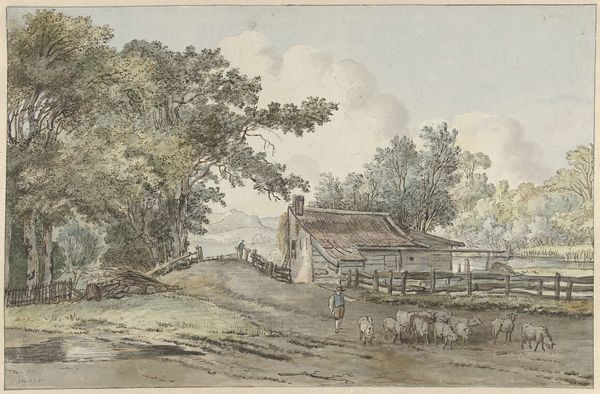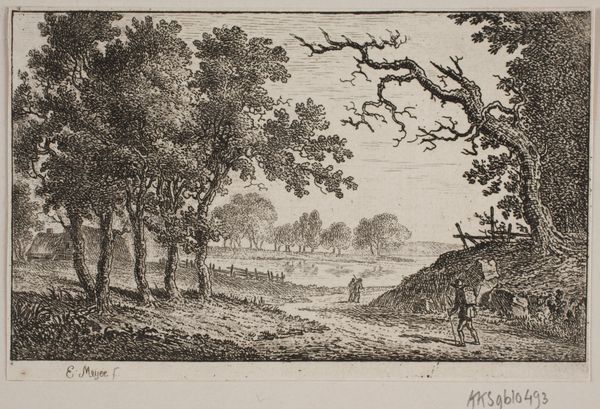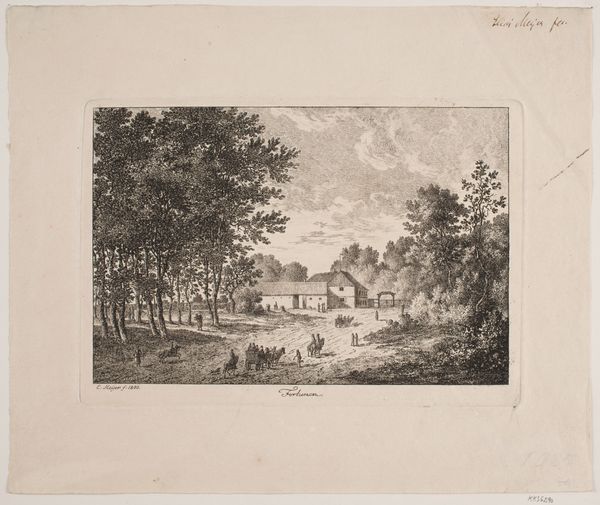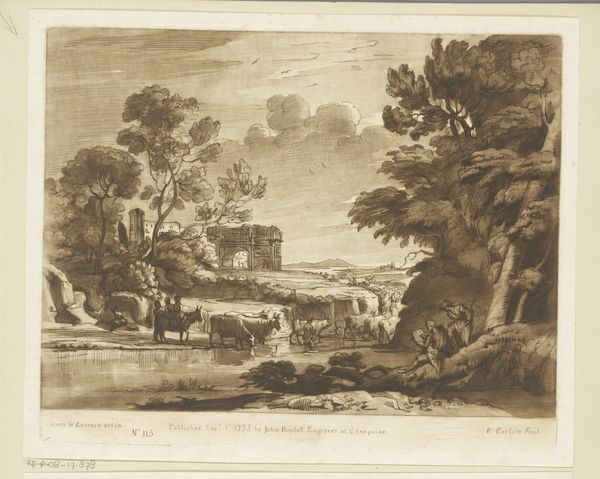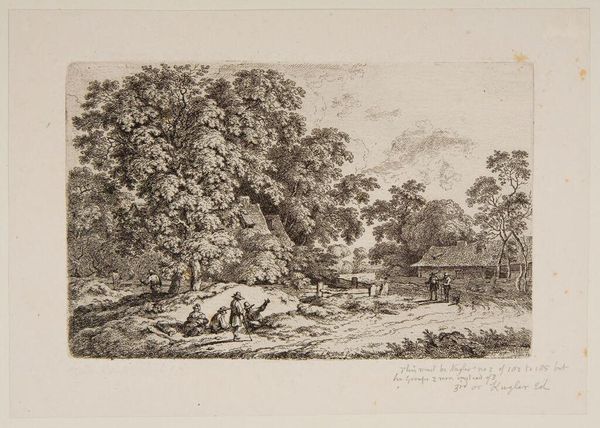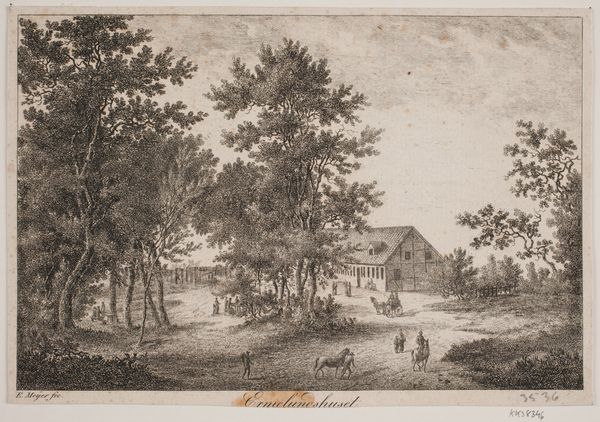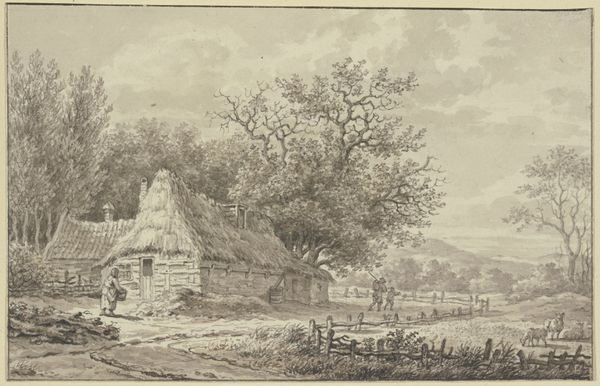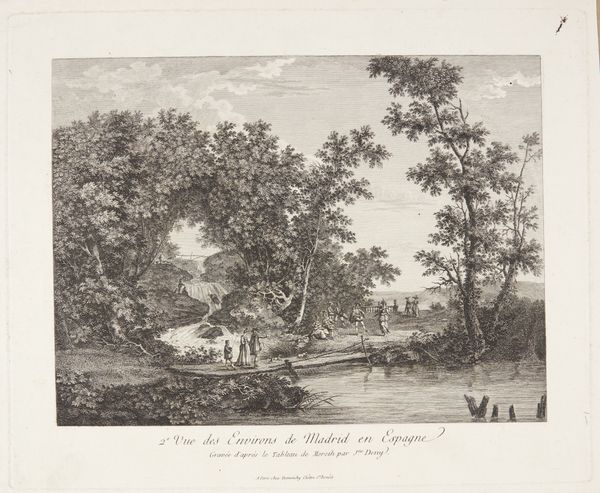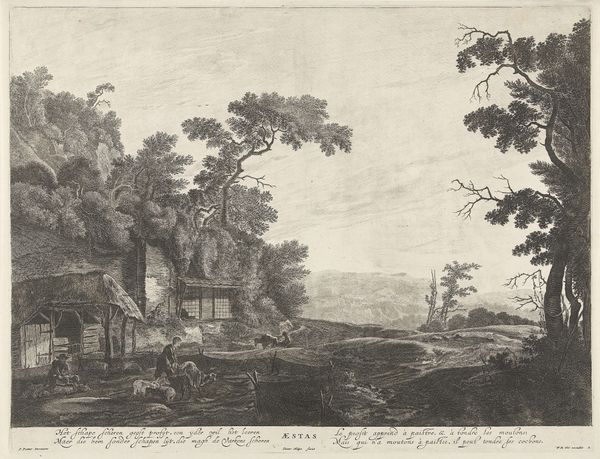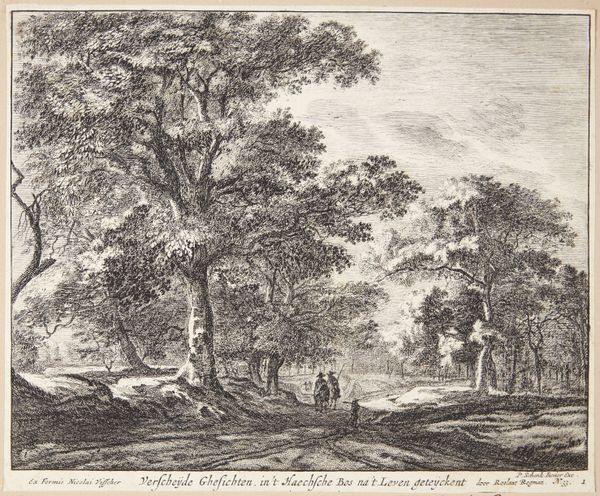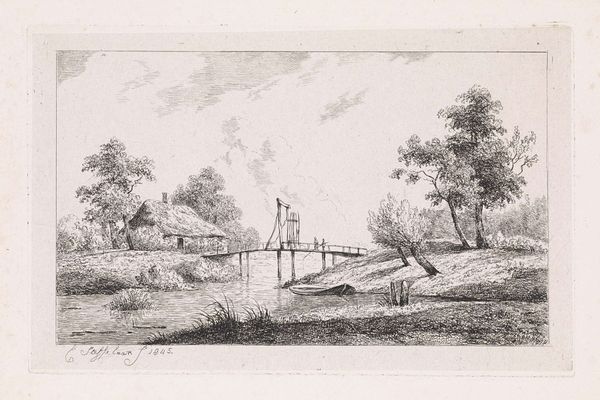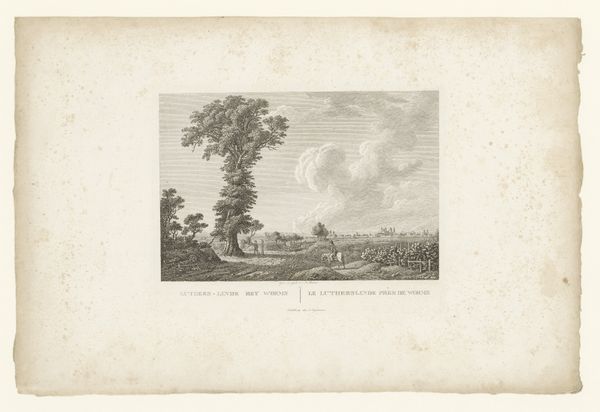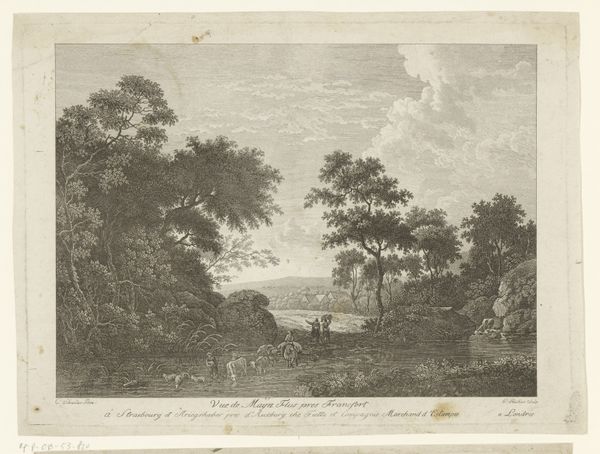
Dimensions: 91 mm (height) x 115 mm (width) (bladmaal)
Editor: Here we have Elias Meyer's "Et Bondehus", placing it sometime between 1763 and 1809. It's an engraving, and the landscape evokes such a sense of pastoral simplicity. I'm curious, what layers do you see at play within this seemingly serene image? Curator: It’s tempting to view this print through a romantic lens, celebrating rural life, but it's vital to ask: whose romanticism is being depicted? The artist, likely distanced from the everyday realities of rural labor, might be presenting an idealized image that obscures the hardships faced by peasant communities during this period. Consider the political climate of the late 18th and early 19th centuries; who had access to land, to resources, to power? Editor: That’s a fascinating point. I hadn’t really considered it beyond the surface. What do you mean? Curator: Think about land ownership, class divisions, and the increasing urbanization that forced people from rural areas into precarious urban existences. This image can be interrogated for its possible role in constructing a narrative that deflects attention from social inequalities, reinforcing a nostalgic view of rural life that romanticizes subjugation. Who benefits from these representations? Editor: So, the print could be more than just a pretty picture; it could be participating in a power dynamic? Curator: Exactly. Art never exists in a vacuum. Editor: This gives me so much to think about when approaching art. I usually focus on composition and technique, but you’ve shown me how to examine its socio-political context. Curator: And understanding that context enriches your reading of the art, revealing its complex relationship with the world around it. Keep asking, "Whose story is being told, and who is left out of the frame?"
Comments
No comments
Be the first to comment and join the conversation on the ultimate creative platform.
